Shimano Rear Derailleur Long Cage 9 Speed Chain Feed
You might just be thinking of going to the mountains to get in some altimeters. But, of course, you'll first want make sure that your bike is up to the task, so that there aren't any unwanted surprises. Many cyclists choose to change their cassette or crankset when they go into the mountains. Doing so gives you a wider range, so that you have more shifting options on the steep climbs and can therefore get to the top a little more easily. When mounting a larger cassette, however, it is important that you take the capacity of the rear derailleur into account.
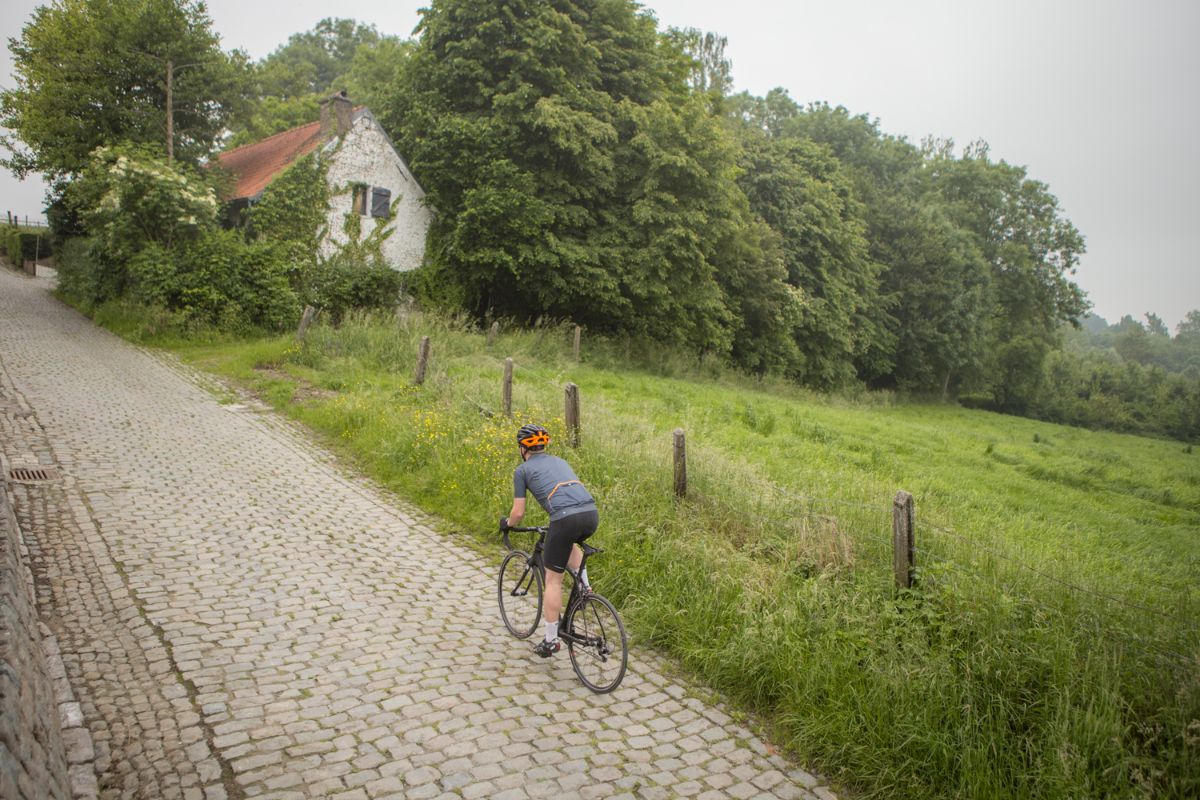
What is a derailleur and how does it work?
The rear and front derailleurs control the shifting on your road or mountain bike. A better quality derailleur can make shifting feel much smoother. The front derailleur ensures that the chain is guided in the correct position on the chainring(s). This article will discuss the capacity of the rear derailleur.
The rear derailleur has a spring which bends the derailleur cage forwards and backwards. The image below shows the derailleur cage. In this way the derailleur maintains the chain tension when shifting between the different cogs.
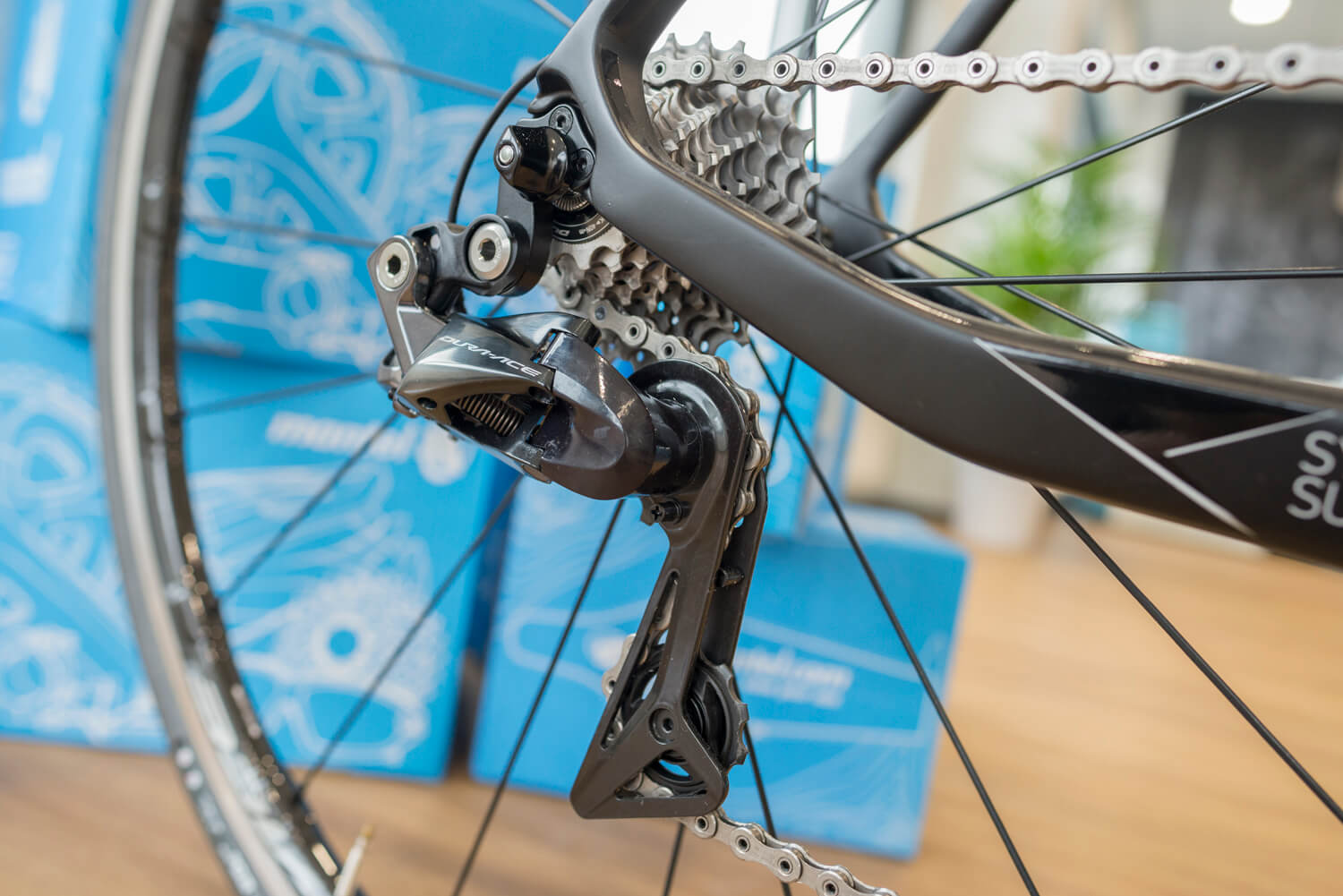
When you shift to the smallest cog in the cassette and the smallest chainring on the front, the derailleur springs backwards in order to maintain the chain tension. The opposite also applies – when you shift onto the biggest cog on the rear and the biggest chainring at the front, the derailleur cage moves forwards to prevent the chain from snapping.
Changing the cassette
In order to obtain a wider range of gears, one usually changes the cassette or the chainrings on the crankset. If you're considering mounting a wider range cassette you should take the capacity of your rear derailleur into account.
All derailleurs have a maximum cassette size. This is often indicated as the maximum number of teeth that can be on the biggest cog (often referred to as low sprocket max in manuals). So when you see that a derailleur has a maximum cassette size of 30T you know that the biggest cog on the cassette cannot exceed 30T.
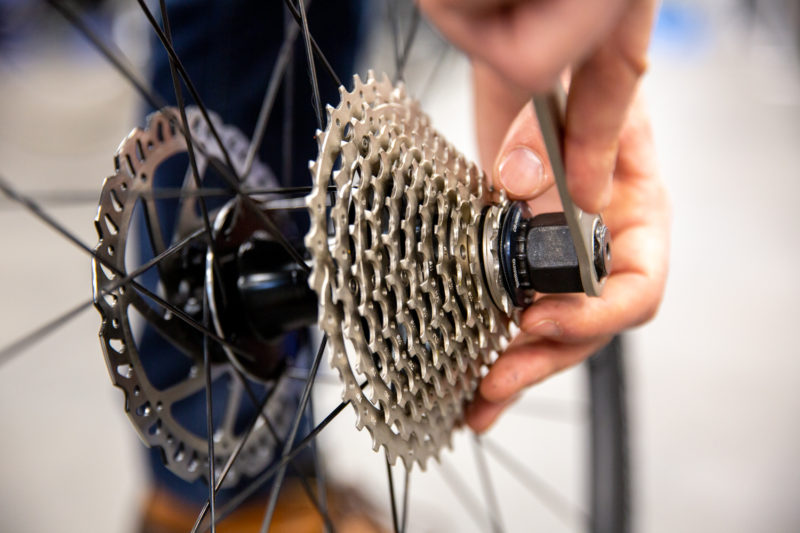
Derailleur cage length
The derailleur cage must be able to handle the cassette's range. If that is not the case the chain can't be correctly tensioned. Derailleur cages come in different sizes.
So you get short cage, medium cage and long cage derailleurs. The jockey wheels are very close together on a short cage derailleur. On a long cage derailleur the jockey wheels are further apart. The distance between the jockey wheels can also differ between brands.
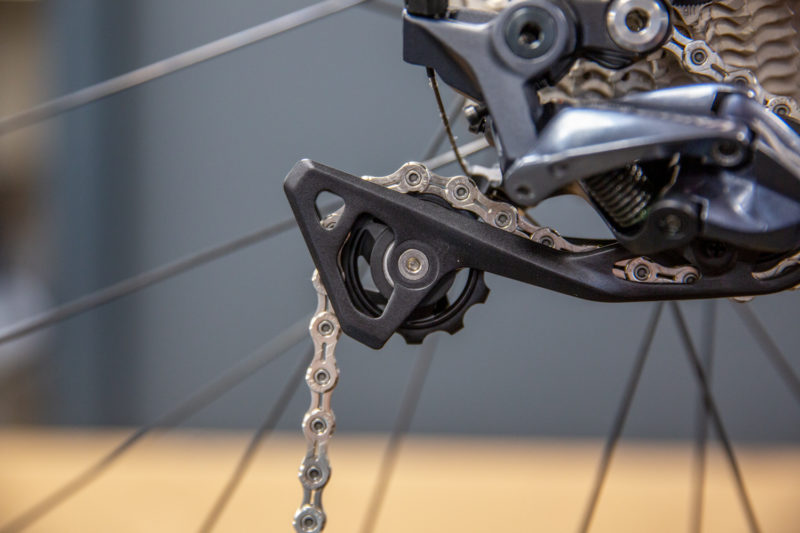
The chain
Changing to a larger cassette can also result in the chain being too short to pass onto the biggest cog. As a result the chain can snap or, worst case scenario, the derailleur can snap off. To determine the correct chain length we developed a handy selection guide. By following a couple of simple steps you can easily choose the right chain for your bike.
You can also take a look at this blog article we wrote on how and when you should replace your chain. The article presents some handy rules-of-thumb that can help determine the correct length of bicycle chain.
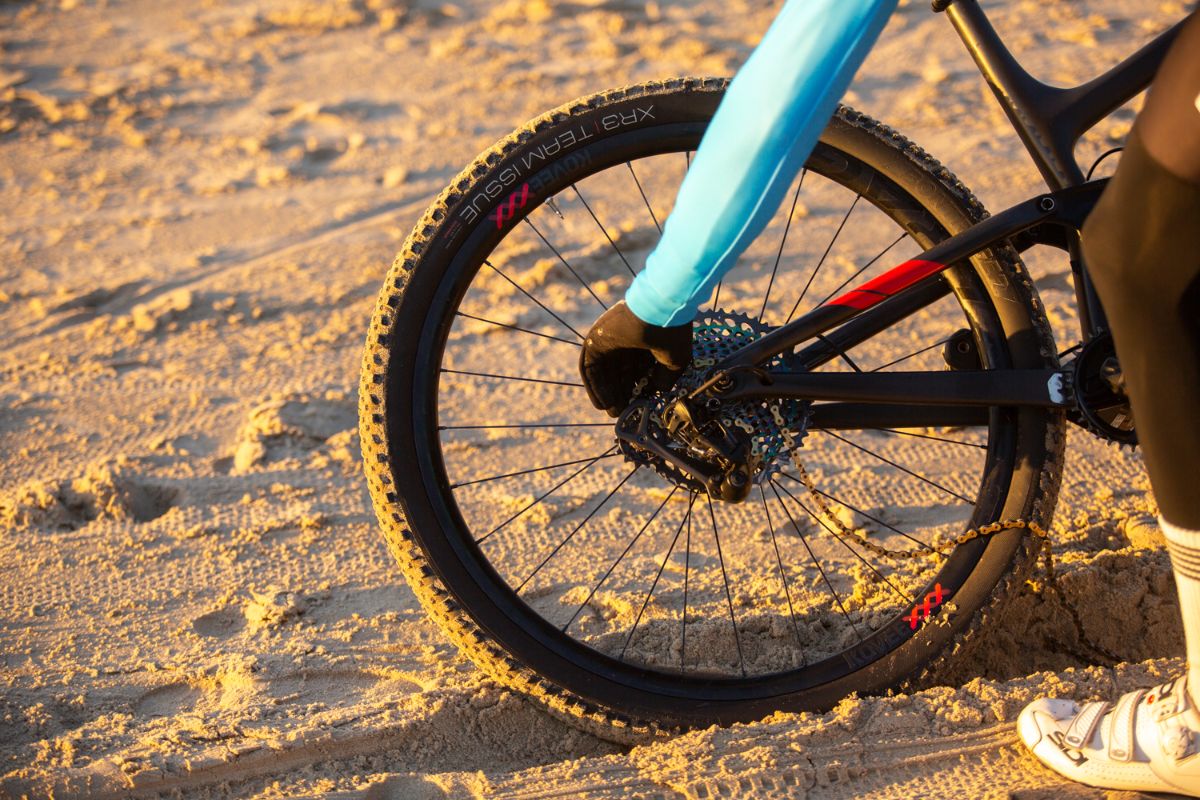
Maximum cassette size and drivetrain capacity
To prevent your chain or derailleur from breaking you need to be certain of whether you can or cannot mount a bigger cassette. To determine this two things are of importance:
- The maximum cassette size
- The drivetrain capacity
Maximum cassette size
When choosing a specific derailleur it's important to check what the maximum is for the biggest cog on the cassette. You can find this info under largest cassette cog, as you see on the product page of this Shimano XT M8120 2×12-Speed rear derailleur.
When you see, for example, 45T listed under the heading largest cassette cog that means that that specific derailleur can handle a cassette where the biggest cog has max 45 teeth.
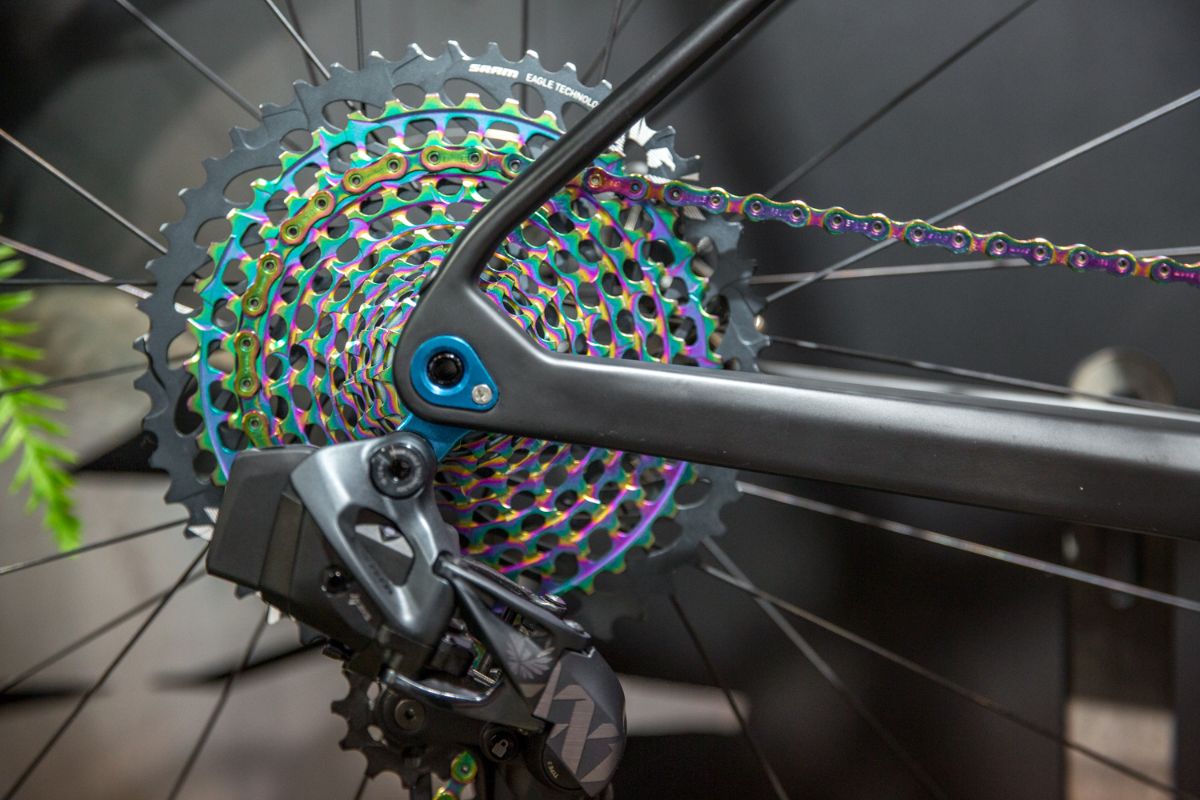
Your derailleur will therefore need to be changed if you want to mount a cassette with more than 45T on the biggest cog. In that case you can choose to fit a Shimano XT M8100 rear derailleur, because this derailleur can handle a cassette of up to 51T.
If you are fitting a cassette with 51 teeth it is usually on a mountain bike. A larger cassette is often wanted on a mountain bike because you often need wider range gearing.

Fitting a long cage derailleur
If the maximum cassette size is exceeded with a certain derailleur, it does not always mean that you have to buy a whole new derailleur. In many cases, a new, longer derailleur cage is sufficient.
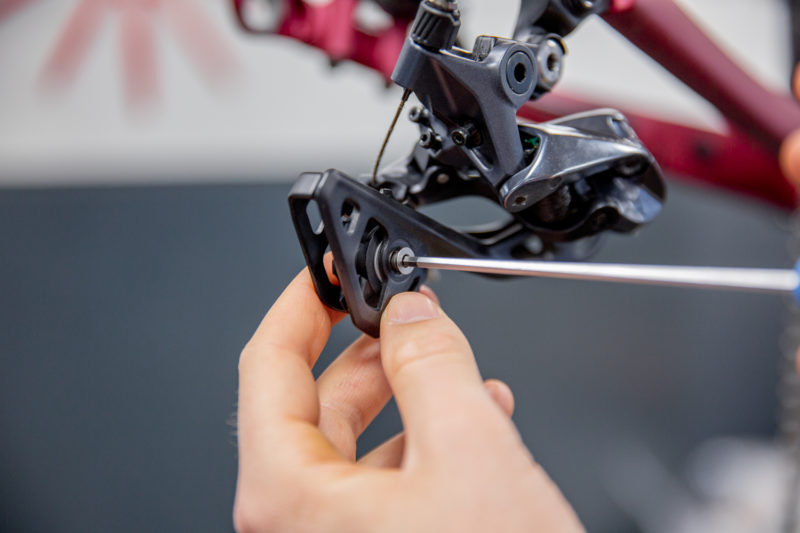
Say, for example, you have a road bike with a Shimano Ultegra R8000 rear derailleur which has a short cage and max cassette limit of 30 teeth. You want to mount an 11/31 cassette, which therefore exceeds the limit of the derailleur. In this case you can choose to mount a longer derailleur cage.
Maximum drivetrain capacity
Not only the cassette has an influence on the derailleur capacity. The crankset (in combination with the cassette) also plays a role in determining the correct derailleur setup.
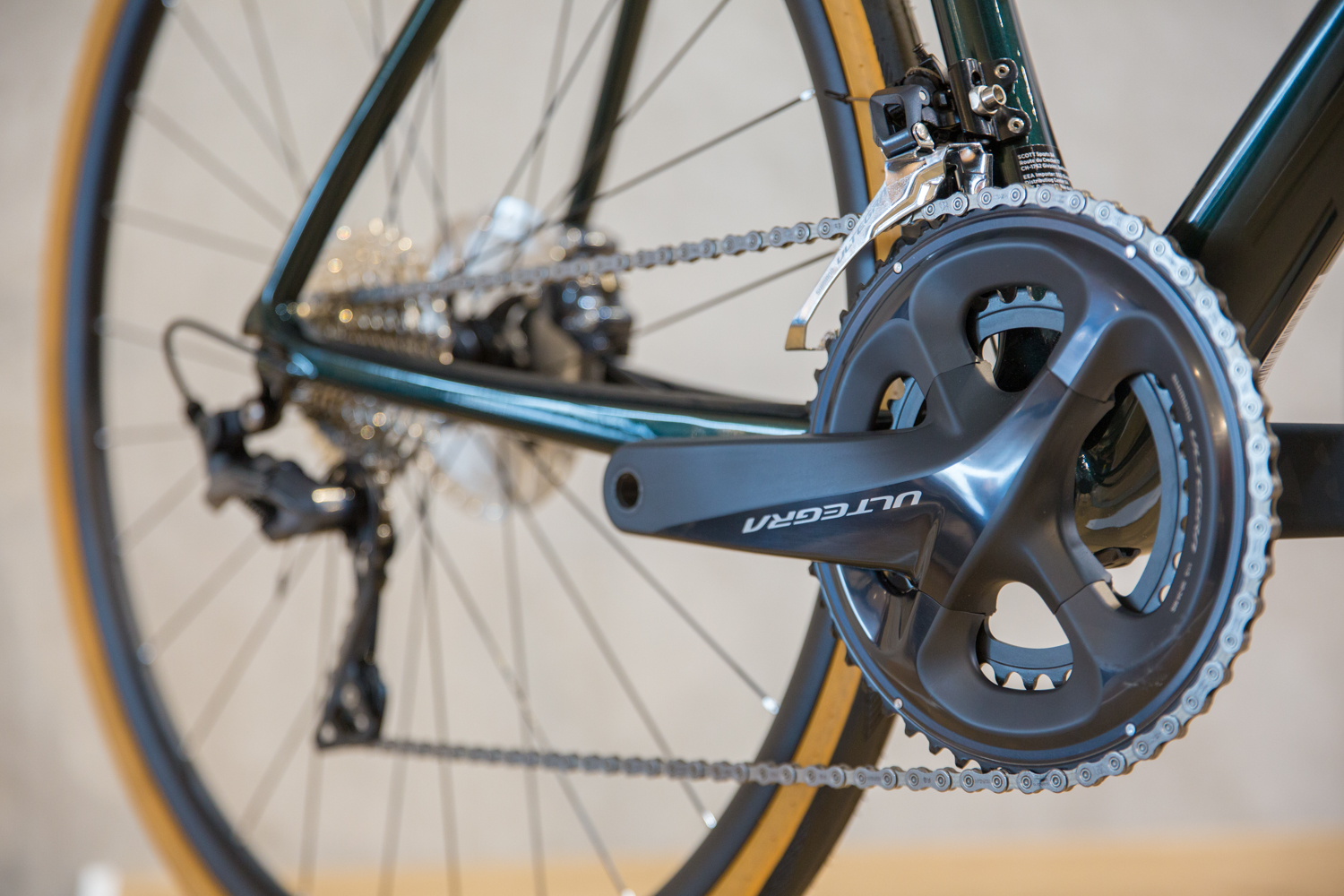
THe difference in teeth between the biggest and the smallest chainrings, and the difference in teeth between the biggest and the smallest cogs on the cassette together determine the drivetrain capacity. You can calculate it with this simple formula:
(Number of teeth biggest chainring − number of teeth smallest chainring) + (number of teeth biggest cog − number of teeth smallest cog) = Drivetrain capacity
An example equation
The longer the derailleur cage, the bigger the cassette can be. In order to calculate how long the derailleur cage needs to be, it helps to calculate what the capacity of the crankset and the cassette is. This is easily done in a few steps. In the example below we assume that you have a 52/36 semi-compact crankset with a 11/28 cassette.
- Subtract the number of teeth on the smallest chainring from the number of teeth on the largest chainring. 52-36= 16.
- Now subtract the number of teeth on the smallest cassette cog from the number of teeth on the biggest cassette cog. 28-11=17.
- Now add the result of step 1 (crankset capacity) to the result of step 2 (derailleur capacity). 16+17=33.
- You end up with a total drivetrain capacity of 33 for a 52/36 crankset with a 11/28 cassette.
If you have a Shimano Ultegra R8000 rear derailleur with a short derailleur cage which has a max drivetrain capacity of 35T, then this is sufficient and you don't need to change anything.
Replacement is needed
Now let's imagine that you want to change to an 11/32 cassette, because you can get to the top of the mountain more easily with it. Before doing this you need to run the equation above again. The crankset remains a 52/36 semi-compact, so the capacity there remains 16. The difference is in the new cassette's capacity, which is now 32-11=21. When you add these two totals you get a total capacity of 37T.

In the previous example, with the Shimano Ultegra R8000 11-speed derailleur, the short derailleur cage had a max drivetrain capacity of 35T. The required drivetrain capacity in this 2nd example is 37T. That means that the short cage of the derailleur needs to be replaced with a longer cage with a max capacity of at least 37T. With the longer cage you can then head to the Alps or the Pyrenees with peace of mind.
There are, of course, very many more derailleurs on the market, other than the Shimano Ultegra R8000 and the Shimano XT 8100. Rear derailleurs are also available from other brands like Campagnolo and SRAM. The different types of derailleurs and cassette capacities of these brands are shown in the tables below.

Each table summarizes the different derailleurs and their capacities from each brand. So if, for example, you have a Campagnolo Super Record from 2020, you can easily find the associated capacity.
Shimano capacities and cassettes
| Short cage | Long cage | |||
| Derailleur type | Cassettes | Capacity | Cassettes | Capacity |
| 105 R7000 Ultegra R8000 Dura-Ace 9100 11-Speed | 11/25 up to 11/30 | 35 | 11/28 up to 11/34 | 39 |
| 105 5800 Ultegra 6800 Dura-Ace 9000 10-Speed | 11/23 up to 11/28 | 33 | 11/28 up to 11/32 | 37 |
| Tiagra 4700 10-Speed w/ double crank | 11/25 up to 11/28 | 33 | 11/28 up to 11/34 | 41 |
| Tiagra 4700 w/ triple crank | Not possible | Not possible | 11/25 up to 11/32 | 41 |
| 105 5700 Ultegra 6700 Dura-Ace 7900 10-Speed w/ double crank | 11/23 up to 11/28 | 34 | 11/28 up to 11/30 | 37 |
| 105 5700 Ultegra 6700 10-Speed with triple crank | Not possible | Not possible | 11/25 up to 11/30 | 37 |
Campagnolo capacity and cassettes
| Short cage | Medium cage | |||
| Derailleur type | Cassettes | Capacity | Cassettes | Capacity |
| 2020 Campagnolo 12-Speed Chorus Record Super Record | Not possible | Not possible | 11/29 up to 11/34 | 39 |
| 2019 Campagnolo 12-Speed Record Super Record | Not possible | Not possible | 11/29 up to 11/32 | 37 |
| Post-2015 Campagnolo 11-Speed Centaur Potenza Chorus Record Super Record | 11/23 up to 11/29 | 34 | 11/23 up to 11/32 | 37 |
| Prior to 2015 Campagnolo Super Record Record Chorus Athena | Minimum 11, maximum 29. Ratio dependent on front chainrings and capacity | 33 | Minimum 11, maximum 29. Ratio dependent on front chainrings and capacity | 39 |
| Campagnolo 10-Speed Veloce Centaur | 11/25 up to 13/29 | 29 | 11/25 up to 12/30 | 32 |
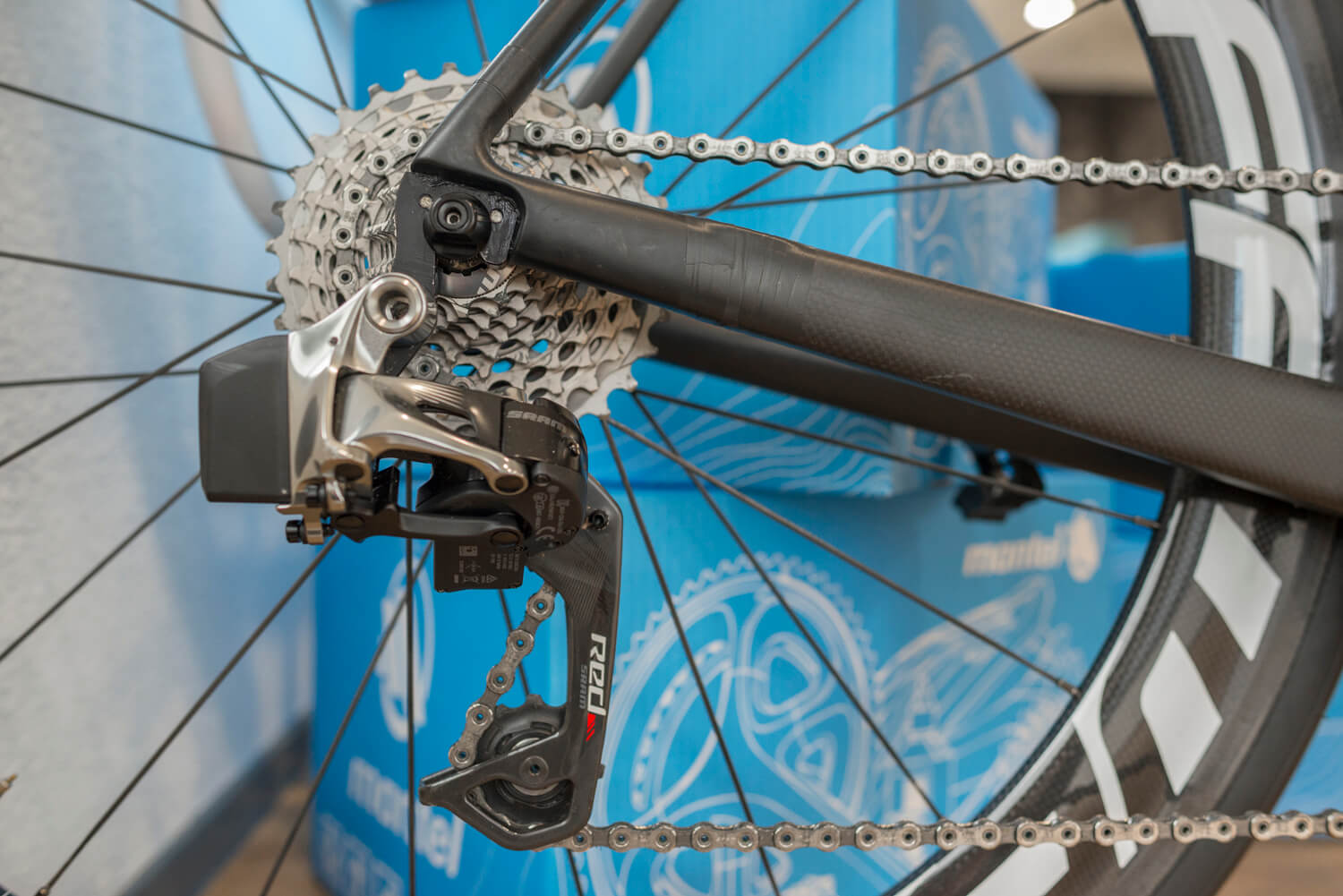
SRAM capacity and cassettes
| Short cage | Medium cage | |||
| Derailleur type | Cassettes | Capacity | Cassettes | Capacity |
| Red 1/2×12-Speed Force AXS 1/2×12-Speed | 10/26 up to 10/33 | n/a | 10/28 up to 10/36 | n/a |
| Red 2×11-Speed Force 2×11-Speed Rival 2×11-Speed Apex 2×11-Speed | 11/25 up to 11/28 | 32 | 11/28 up to 11/32 (WiFli derailleurs) | 37 |
| Force 1×11-Speed | Not possible | Not possible | 11/28 up to 11/42 | 31 |
| Rival 1×11-Speed | Not possible | Not possible | 11/36 up to 11/42 | 31 |
| Apex 1×11-Speed | Not possible | Not possible | 11/42 | 31 |
| Red 2×10-Speed Force 2×10-Speed Rival 2×10-Speed Apex 2×10-Speed | 11/25 up to 11/28 | 32 | 11/28 up to 11/32 (WiFli derailleurs) | 37 |
Why not just always have a long derailleur cage?
As you have seen above, a long cage derailleur can solve a lot of problems, so you might ask why not just always have a long cage derailleur? This would allow you to get around on the flats as well as up mountains.
In theory it's possible, but the drivetrain won't run optimally. The shorter cage does save a few grams, but this is something only the weight weenies find important.

What is more important is that the longer cage will be less precise in its shifting. The smaller the cassette ratios, the smaller the differences between the cogs. For a long cage derailleur it then becomes more difficult to continue shifting smoothly.
It can also cause the chain to run skew over the front chainring and the rear cog. As a result the chain will wear far more quickly.
Conclusion
When buying a new cassette it is therefore always important to know the drivetrain capacity. This usually appears on the product page and can be calculated using the handy equation in this blog article. In this way you can avoid any unwelcome surprises on your trips up and down the mountain.
Source: https://www.mantel.com/blog/en/derailleur-capacity-maximum-techcenter
Post a Comment for "Shimano Rear Derailleur Long Cage 9 Speed Chain Feed"